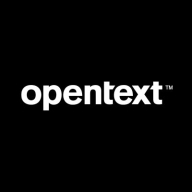

Control-M and OpenText Operations Orchestration are competitive products in the realm of automation and orchestration. Control-M tends to have the upper hand due to its advanced scheduling and predictive analytics features, whereas OpenText Operations Orchestration offers superior integration flexibility, making it more adaptable in diverse environments.
Features: Control-M's valuable features include advanced job scheduling, comprehensive reporting, and predictive analytics which enhance operational efficiency. It supports various platforms and provides excellent error handling and forecasting utilities. OpenText Operations Orchestration offers custom workflows, supports broad integrations, and features a scalable architecture suitable for complex settings.
Room for Improvement: Control-M could enhance its user interface for even greater ease of use and reduce learning curves for new users. It might also benefit from expanding its integration with emerging technologies and cloud-native tools. OpenText Operations Orchestration could improve its automatic failover capabilities, offer better reporting features, and enhance its high-availability support to ensure uninterrupted operations.
Ease of Deployment and Customer Service: Control-M offers both straightforward on-premises and cloud deployment options complemented by proactive customer support, noted for quick response times. OpenText Operations Orchestration features flexible deployment models including on-premises, cloud, and hybrid solutions. Its versatile deployment options increase adaptability, while efficient support ensures quick resolutions to inquiries.
Pricing and ROI: Control-M's pricing structure is an upfront investment that generally offers a high ROI through efficient operation and reduced costs. It provides a predictable cost model advantageous for budget planning. OpenText Operations Orchestration may present lower initial setup costs but often requires additional investments as operational complexity develops. Its pricing could offer long-term investment opportunities depending on scalability requirements.
The main return on investment with Helix Control-M has been a reduction in downtime and minimization of manual interventions, which has improved our operational efficiency.
You can run a million batch jobs or tasks at night when all of your highly skilled people are at home sleeping.
By implementing automation tools, you can minimize human errors and improve efficiency.
They quickly evolve with changing technology trends, easily adopt new features, and incorporate them into the product.
The support is accurate, and BMC is always ready to help with queries and complex incidents.
The technical support is very polite, helpful, and available 24/7.
Our license doesn't limit our ability to configure Control-M as needed, allowing us to easily create new agents or environments.
I am paying for a top-end tool which rarely experiences issues, with most problems stemming from the applications being managed rather than the tooling itself.
It can absorb more workload wherever needed.
Control-M itself is robust, and it would receive a rating of 10.
The downtime is higher compared to AWS.
The testing and development phases need to be more rigorous before releasing patches.
They could provide more documentation and tutorials to make the initial setup easier to understand.
We've experienced main problems with MFTE where having one setup means when an error occurs, the entire service goes down.
Documentation should be maintained for all versions since they provided the application.
The licensing cost is very high, and they often consider switching to IBM Workload Scheduler or other options.
Control-M tends to be more expensive compared to other solutions, but users get great value from it.
Control-M is among the highest-priced solutions in the market.
Automation is more advanced, deployment is fast, and version control has been simplified.
The user interface is comprehensive and lets me view all my jobs on one page, monitor everything, and access the job history.
It is easy to integrate Control-M with technologies for data ops or DevOps processes as things change, and it is not complex compared to other workload automation tools available in the market.
| Product | Market Share (%) |
|---|---|
| Control-M | 3.6% |
| OpenText Operations Orchestration | 1.0% |
| Other | 95.4% |

| Company Size | Count |
|---|---|
| Small Business | 30 |
| Midsize Enterprise | 15 |
| Large Enterprise | 122 |
| Company Size | Count |
|---|---|
| Small Business | 4 |
| Midsize Enterprise | 2 |
| Large Enterprise | 20 |
Control-M by BMC is engineered to manage hybrid cloud workflows, offering orchestration capabilities starting at $29,000 annually. Aimed at helping growing teams, it efficiently supports cross-environment scheduling and automation needs.
Control-M offers robust cross-platform scheduling, automation, and integration with applications such as SAP and Informatica. Users appreciate its ease of use with a graphical interface, centralized management, and monitoring capabilities. Advanced features, including Managed File Transfer, automated error handling, and real-time alerts, enhance productivity. The ability to unify workflows and support diverse environments makes Control-M a trusted tool in many sectors. While improvements in reporting flexibility and API integration with tools like ServiceNow are needed, addressing performance issues during upgrades could enhance its value. Offering improved support for new technologies and cloud environments is beneficial, with cost-effectiveness being a consideration.
What are the key features of Control-M?Control-M is leveraged in industries like finance for enterprise scheduling and data management, supporting mainframe, Linux, Unix, Windows, and cloud platforms. It contributes to workflow orchestration and workload automation, improving operational efficiency and enhancing IT infrastructure across those environments.
OpenText Operations Orchestration (OO) automates, integrates, and orchestrates any IT process, on cloud or off. Automate using low-code/no-code workflow authoring options. Integrate with an API rich, extensible platform. Centrally orchestrate powerful, scalable workflows.
With OO you can automate and orchestrate infrastructure automation and IT processes from service fulfillment to incident remediation, cloud service delivery, and disaster recovery.
Operations Orchestration offers the tools needed to provide enterprise wide orchestration capabilities:
Operations Orchestration offers the following components:
We monitor all Process Automation reviews to prevent fraudulent reviews and keep review quality high. We do not post reviews by company employees or direct competitors. We validate each review for authenticity via cross-reference with LinkedIn, and personal follow-up with the reviewer when necessary.